Musical Fidelity LS3/5a Loudspeaker Review
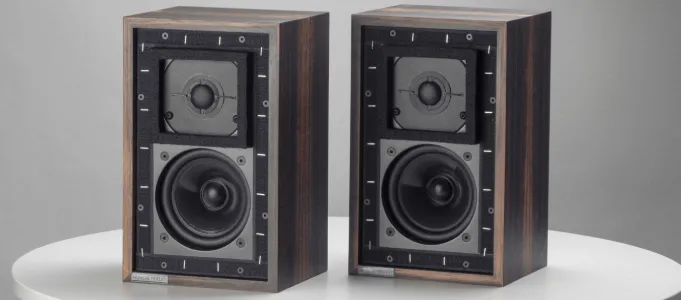
David Price reckons that the latest version of the classic BBC mini-monitor will make many new friends…
Musical Fidelity
LS3/5a Standmount Loudspeakers
£2,349 RRP
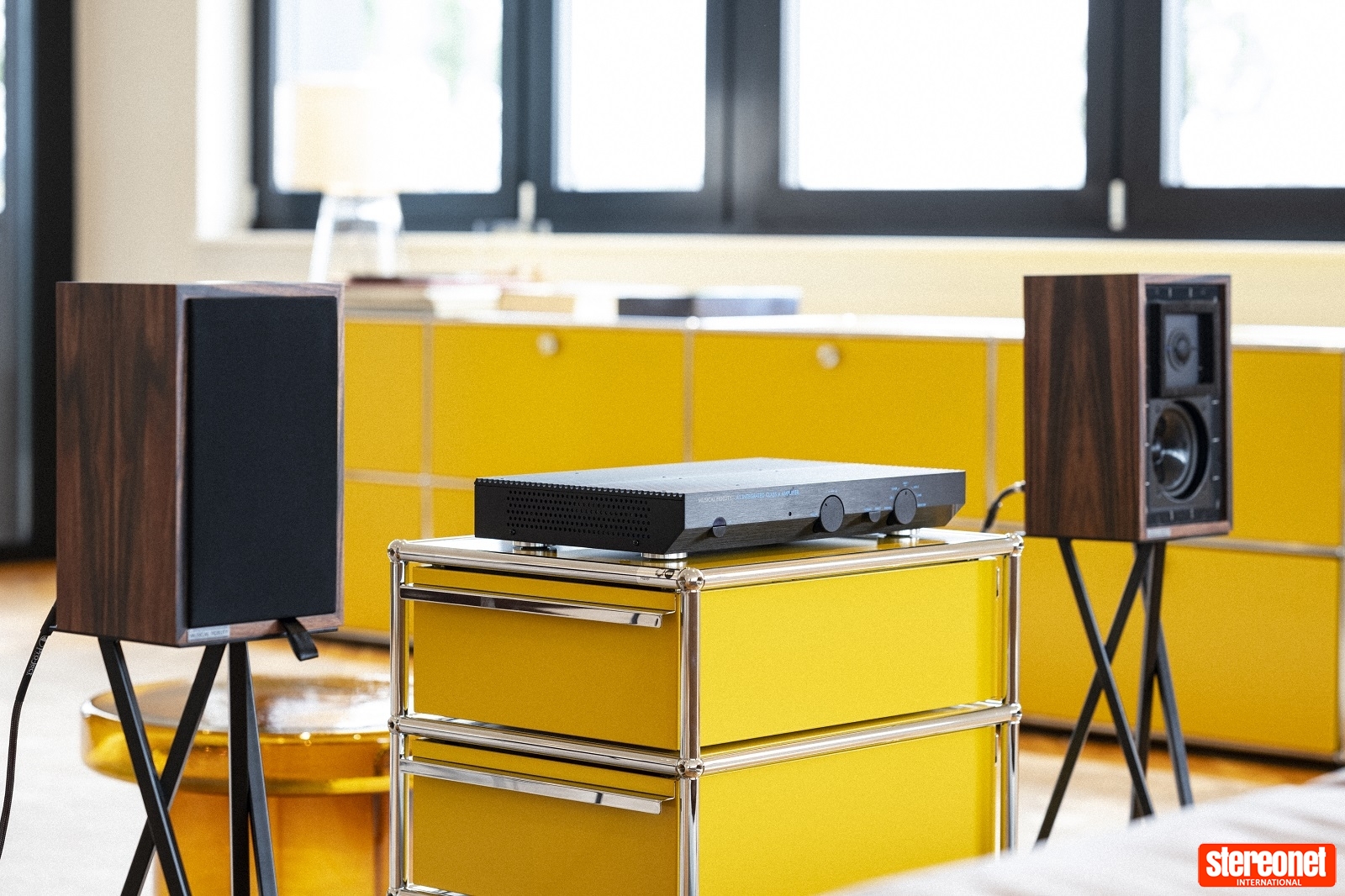
Who in the hi-fi world is having all the fun right now? My money's on the founder of Pro-Ject, Heinz Lichtenegger, who is never far away from a wry smile. It's certainly true that he's been on manoeuvres in recent years – his acquisition of Musical Fidelity was a definite eyebrow-raiser. This was not entirely unexpected because both Heinz and the British company's founder, Antony Michaelson, are very market-savvy people with great imaginations. Yet, not even Antony had the bright idea to make his own version of a BBC LS3/5a mini monitor…
"We have structured Musical Fidelity to bring true high-end products to a more affordable price point," Heinz tells me, "and we see no reason why speakers should be excluded from that aim. In the history of hi-fi, many really good brands have been able to build entire system solutions in-house, and with the new LS3/5a and A1 integrated amplifier, we are showing we can be one of those brands…"
He says that he has always been taken by the sound quality that's possible from well-made 2-way loudspeakers, so the iconic BBC small speaker design was always on his radar. "As we were working on the rebirth of the A1, we got caught up by the idea of making a classic loudspeaker that would work perfectly with it." He adds, "I also feel that although there are some wonderful brands still making this speaker, I do not see it widely around the world. I feel that in partnership with our new A1 (reviewed here)– or even with our M2 amplifier if you require more power for bigger spaces – we can get this classic speaker design to a wider audience than ever before."
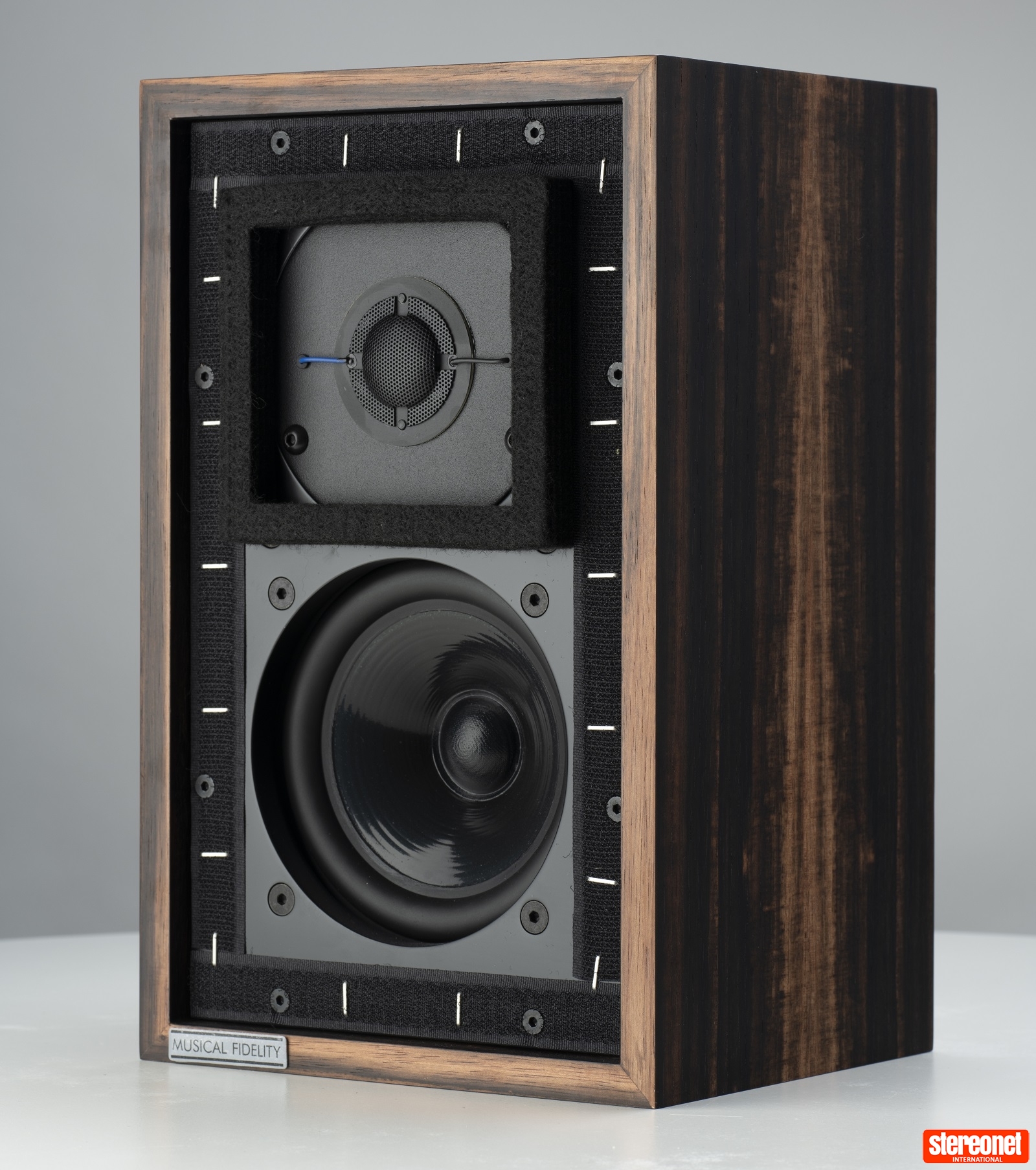
He may well be right. Heinz has achieved great success with his Pro-Ject brand, which he founded in 1992. He started making basic, affordable turntables just when the mass market began moving away from the breed – and stepped in to fill a gap that was created by more prominent turntable brands vacating this market space. His speciality is doing high-value designs that sound much better than they should at the price, and in a way, the original Musical Fidelity was very similar – albeit starting off at a slightly higher price point. And he's correct to state that he's very good at getting his products into shops and, by extension, into people's homes. All well and good then, so what does Heinz think he can bring to the BBC LS3/5a loudspeaker?
"As I see it, audio products like the LS3/5A are musical instruments. The specs are given with this speaker, but the material choices, the production discipline of the manufacturer, and the design inferences you make are how you reach the final sound. Everything that goes into the product has an impact on the sound, and that's where you get differences. I am okay with however anybody interprets our speaker, as that's what hi-fi is about – finding the right way to enjoy your music. In our version, we've done our best to make it sound how we think it should."
It's fair to say that most audiophiles don't automatically associate Musical Fidelity with loudspeaker manufacturing, so Heinz will have to challenge this. He points out, correctly, of course, that back in the mists of time in the early nineteen eighties, the brand did actually sell several well-regarded speakers. It's just that founder Antony Michaelson's focus was always on electronics, so they rather took a back seat…
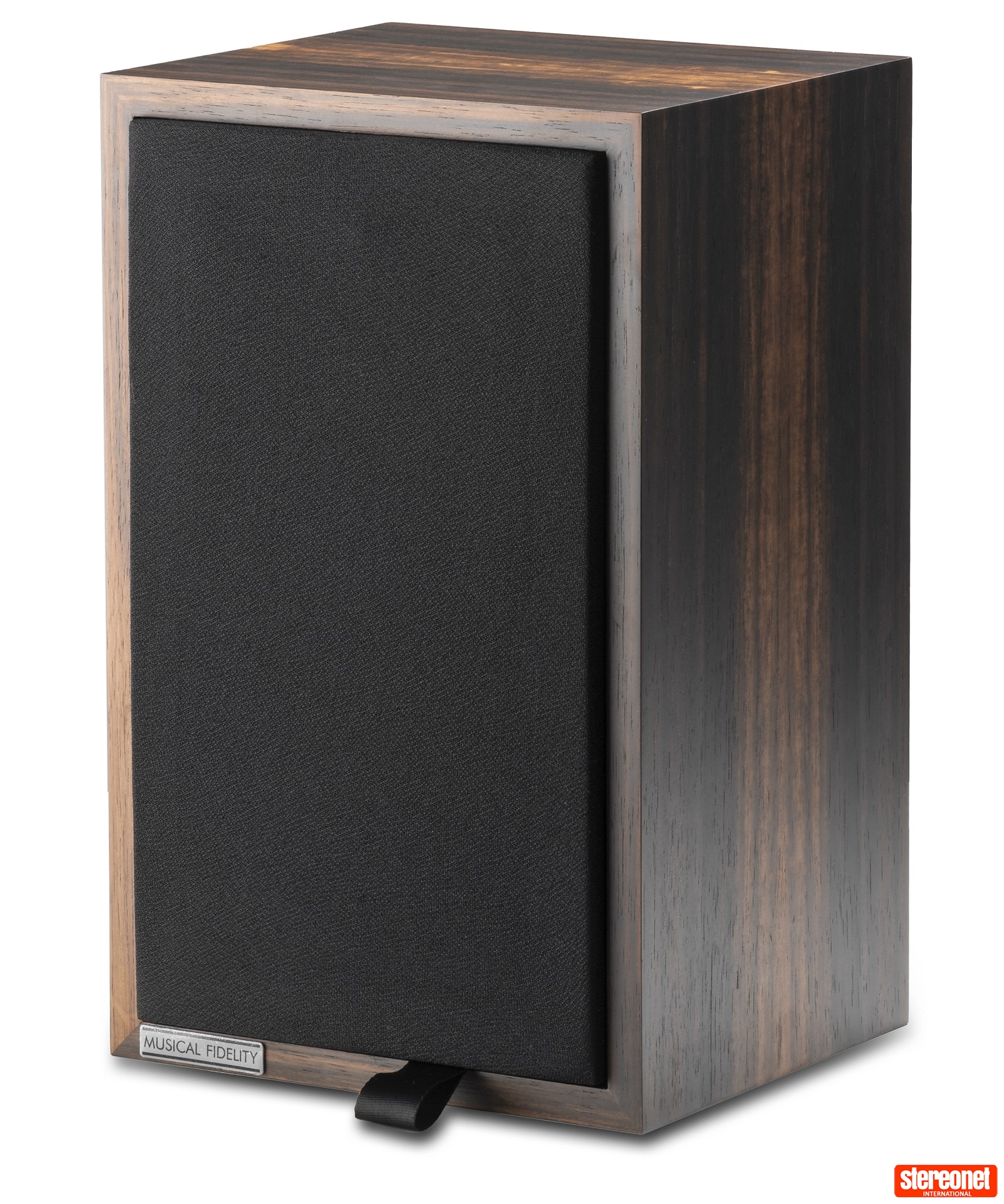
"Musical Fidelity may not be best known for speakers, but we have a long history with the product category. Some may remember our partnership with Kelly Transducers, and we still hear from customers regularly with questions about their MC-2 and MC-4 speakers. It's true those models did not hang around for too long, as Antony was always looking to move on to his next great idea, but they were very good products… With us, it is always about making the decision of whether we can do the product the correct way. As long as we have the ability to do that, we work to make it happen."
In other words, what would have held Heinz back was if he couldn't be sure he could make the LS3/5a correctly rather than mere branding considerations. As it turned out, he has been able to get the project up and running with manufacturing in the Pro-Ject factory in Litovel, Czech Republic. He tells me that he has been supported in this by Joseph Szall, who is an expert on LS3/5as. "He has helped us a lot with his experience to get it right", he confides. The components for this speaker are apparently sourced from all around the world. Although this version is not officially licensed by the BBC, it is built to the precise standards of the LS3/5a specification.
UP CLOSE
The speaker was designed as an ultra-compact, near-field monitor for small spaces. Anecdotally, when I was a student in the nineteen eighties, I was interviewed by BBC Bristol on some trivial matter, and they ushered me into an outside broadcast van where – lo and behold – was a microphone and a single LS3/5a. That was the first time I heard this speaker, and I remember the BBC producer's voice being exceptionally clean and clear. The baby monitor was also seen in TV studios, control rooms and anywhere else where a small speaker with a flat frequency response was needed, right down to 100Hz.
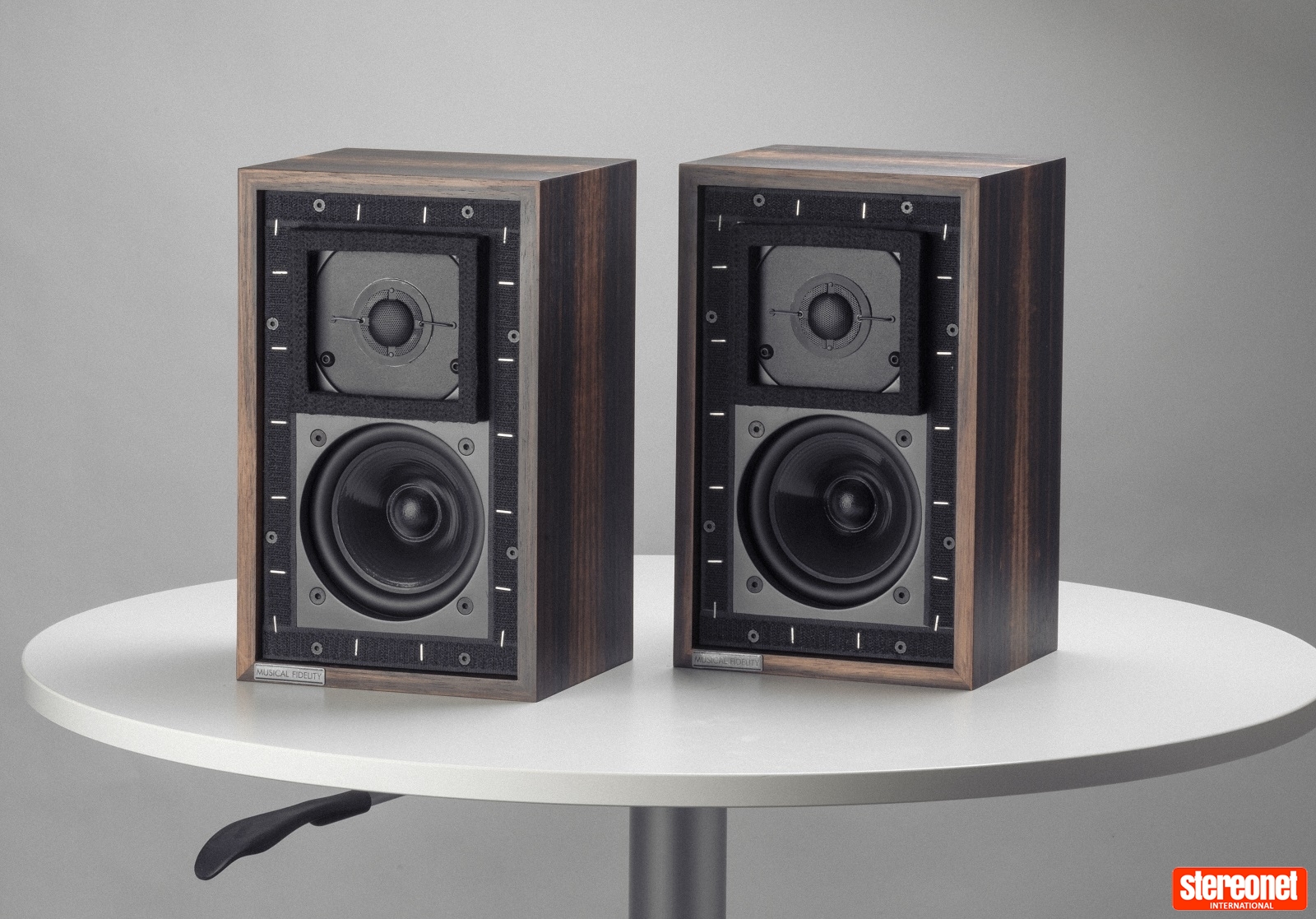
The LS3/5a was adopted by audiophiles soon after it was launched in the mid-seventies. In that world of strange speakers with all kinds of quirks and foibles, its smooth and even performance was a revelation. Its infinite baffle design also made – and makes – it very room-friendly, as you can ram it back against a boundary wall with very little boom. Indeed, some would say that a degree of bass reinforcement is desirable with this speaker. It uses just two small drive units: a 110mm KEF B110 Bextrene mid/bass driver and a 19mm KEF T27 mylar dome tweeter. These are divided up through a relatively complex, multi-element crossover; thanks to this, the infinite baffle cabinet and the relatively insensitive drive units, the result is a sensitivity figure of 82.5dB.
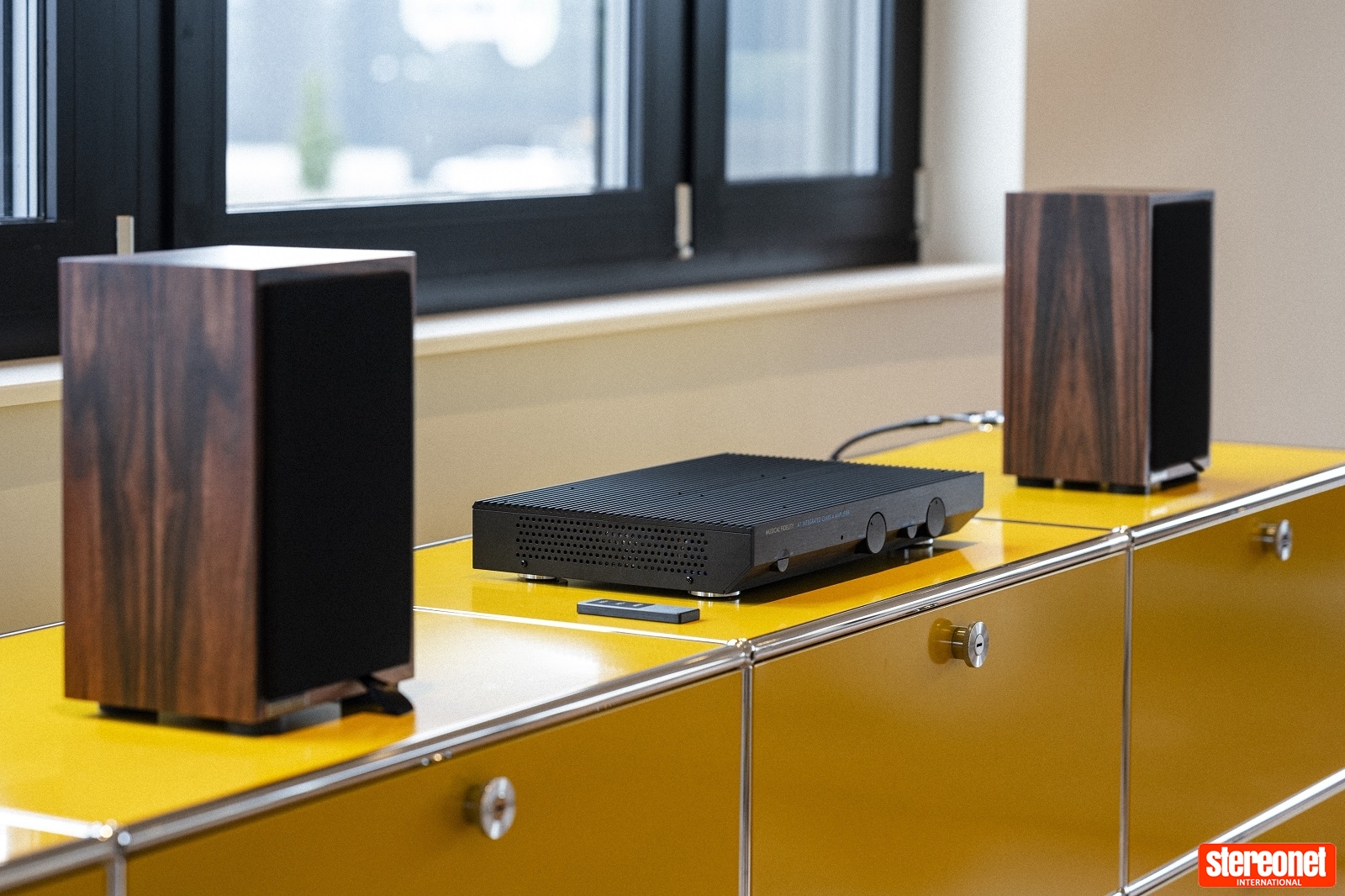
As audiophiles will know, this is very low – indeed it is one of the least sensitive loudspeakers on sale. In the mid-seventies – when conventional amplifiers rarely put out more than 40W RMS per channel – such poor sensitivity was a real issue. Now, though, many boast 100W RMS or more per side and won't find this speaker a challenge to drive to quite high listening levels. Its 15 ohm nominal impedance further eases things, as it's not asking questions of the amplifier's load-driving ability. So, in practice, the LS3/5a should work fine with most modern amplifiers in the small to medium-sized rooms where it will likely be used.
Musical Fidelity says that the recommended amplifier power is 20 to 150W, but I'd say that you'll need more than 20W if you play beat-driven music loud in a medium-sized room – the more, the merrier! Claimed frequency response is 80Hz to 20kHz (+/-3dB), which hints at the quality of the original design; even by the standards of small bookshelf speakers, the LS3/5a is diminutive at 305x190x165mm [HxWxD]. To get 80Hz bass at -3dB is really pushing the laws of physics, I'd say. The cabinet is 12mm birch plywood – no MDF used here – and this version comes with a highly attractive Palisander real wood veneer. Each speaker weighs 4.9kg.
THE LISTENING
If you've never heard an LS3/5a, then the Musical Fidelity version is about as good a place to start as any. It is extremely faithful to the original BBC-prescribed sound, which is, of course, clean, smooth, even and detailed, with pleasing subtlety, tight bass and fine imaging. All of these characteristics are what you'd expect from an extremely thoroughly researched and designed loudspeaker – even if that work took place nearly half a century ago. As the Quad ESL-57 shows us, when something is done right, then it stays right!
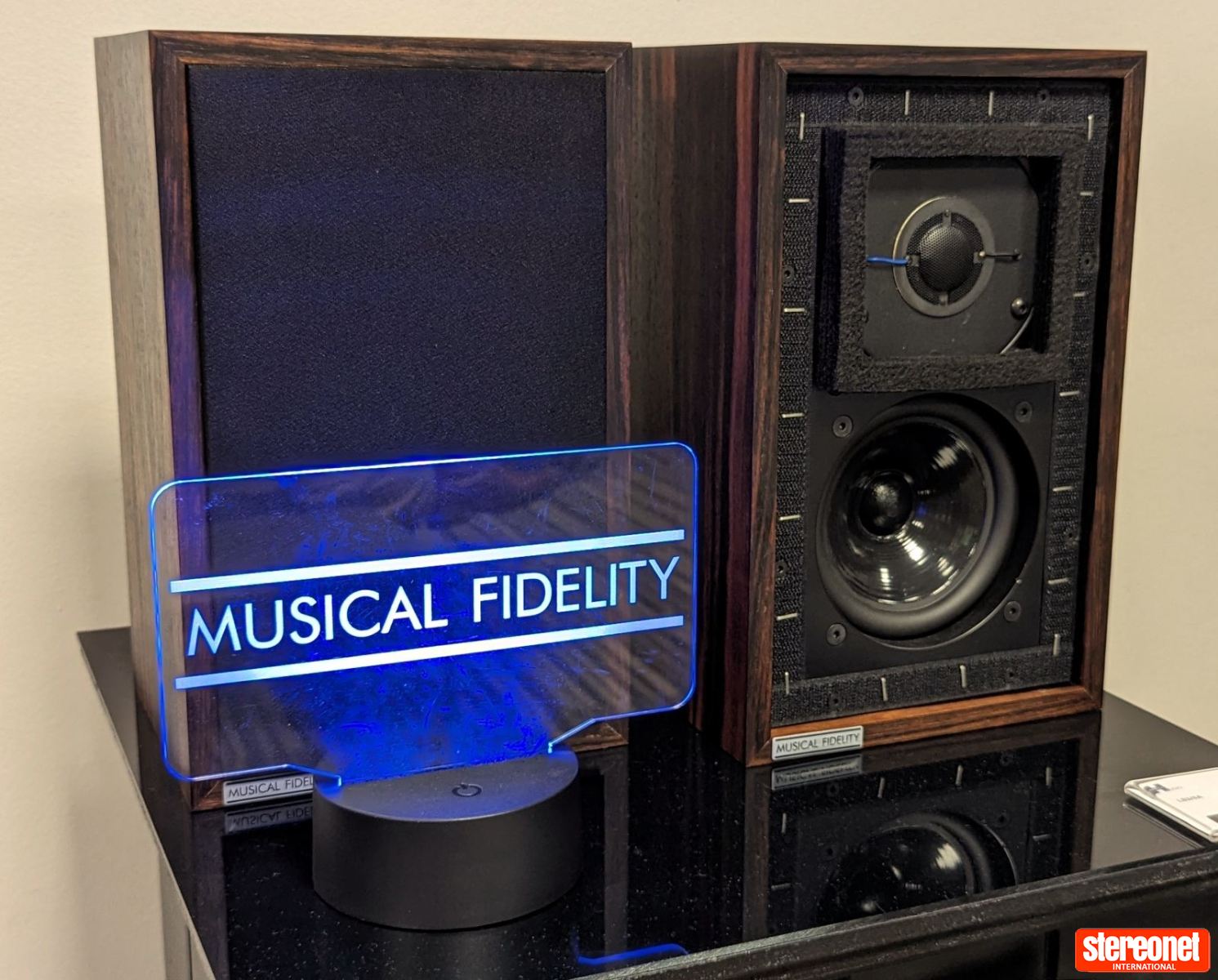
That's not to say that it's the most accurate, open, revealing and detailed small loudspeaker in existence. It may well have been in the seventies or even the eighties, but there are compact designs that better it in a number of ways now – but they are all a lot more expensive. The LS3/5a has aged like a fine wine; it no longer claims to be the most translucent small speaker in existence, but it's still a damn good listen and extremely impressive at what it does well. Listened to from a modern perspective, it's just a wee bit warm and romantic sounding.
Driven by Musical Fidelity's own M5si – which is a similarly priced Class AB powerhouse of an integrated amplifier – and a Chord Hugo TT2 DAC, this new speaker sounds quite superb. It is fast, grippy, tight and propulsive in the time domain, and tonally just like an LS3/5a should be – which is to say smooth, even and ever-so-slightly warm. It lacks the glare of many modern loudspeakers, with their trick drive units made from fancy new materials. The classic jazz funk of Alphonse Mouzon's By All Means proves to be a delight via this speaker. There's a satisfying lustre to the saxophones, a lovely earthiness to the electric guitar sound, and a gnarly solidity to the bass guitar. True, this speaker doesn't pump out large tranches of earth-shattering bass, but what little there is, is super-taut and tight.
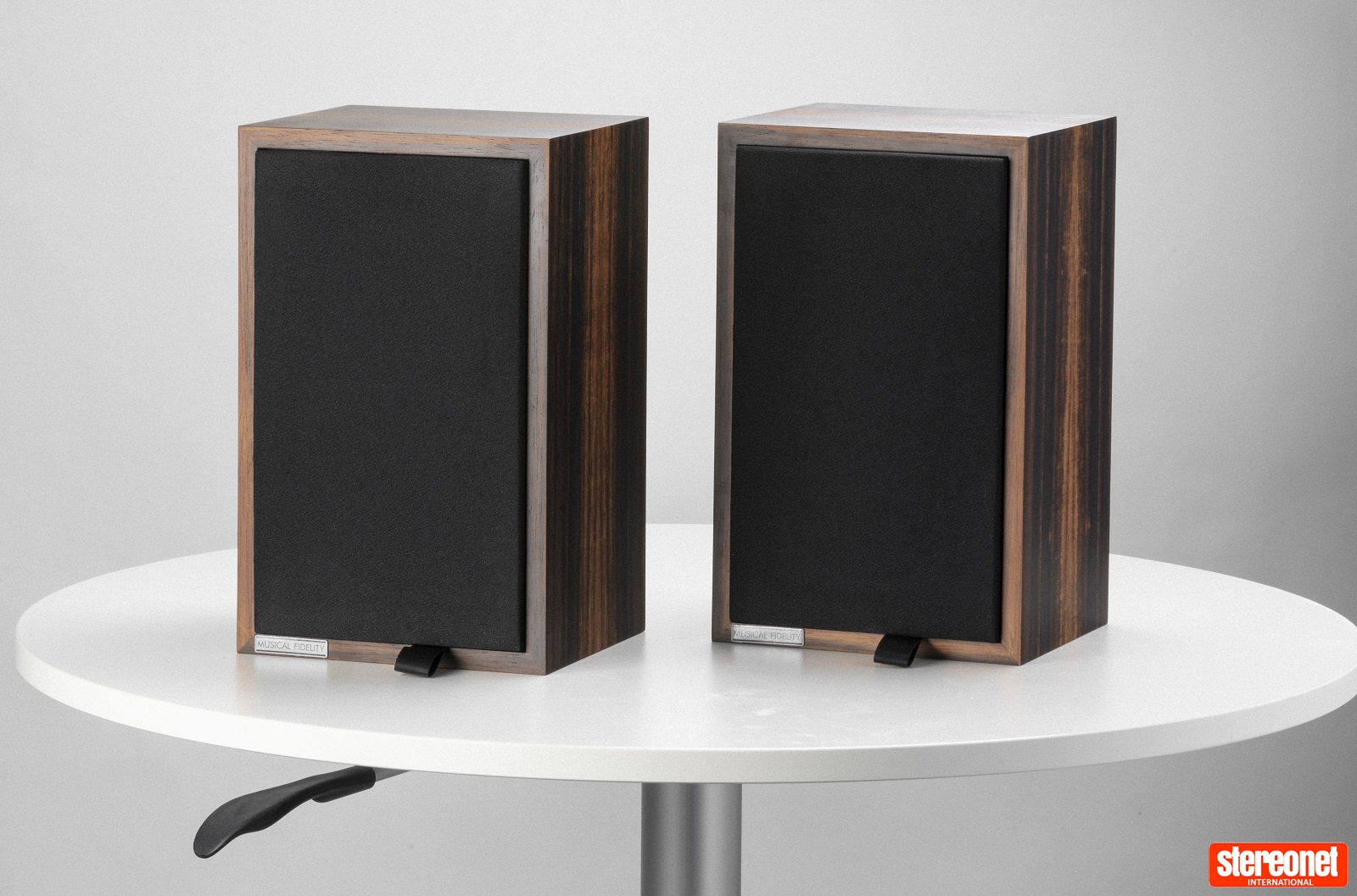
The LS3/5a's midband has always been a bit special, and that's never more apparent than with female vocals. Kate Bush's Cloudbusting sounds lovely. It's not the greatest recording from this artist and can sound a little opaque and ponderous, yet the little Musical Fidelity speaker ekes out the best from it. The singer's soaring, icy vocals push far out into the room and have a haunting quality; the grain of her voice is clear to hear yet never sounds harsh. The backing electronics are powerful and expansive in my listening room, conjuring up a suitably dramatic backdrop. True, this mini monitor runs out of puff at high volumes, and you can hear some compression – yet it goes louder than you might think, to the point that you're left questioning why you have larger speakers. Also, up to a point, this speaker is surprisingly dynamic. It doesn't sit on transients as much as most compact bookshelf designs. The Linn Kan II frame-type stands seem to help here, giving the BBC design a firm foundation on which to do its stuff.
You probably wouldn't buy an LS5/3a if you're a fan of church organ music or drum'n'bass – it simply doesn't go low enough. Yet many people have used subwoofers and had pleasing results. On its own, this speaker still makes a great fist of classic rock music, however. On REM's Maps and Legends, I can hear the upper bass push the song along with gusto and focus on the brilliantly syncopated lead guitar work and vocal line. It's a very rewarding listen, but in a subtle and sophisticated way – it's not the sort of speaker that pushes you back in your chair like a big JBL or Klipsch, obviously.
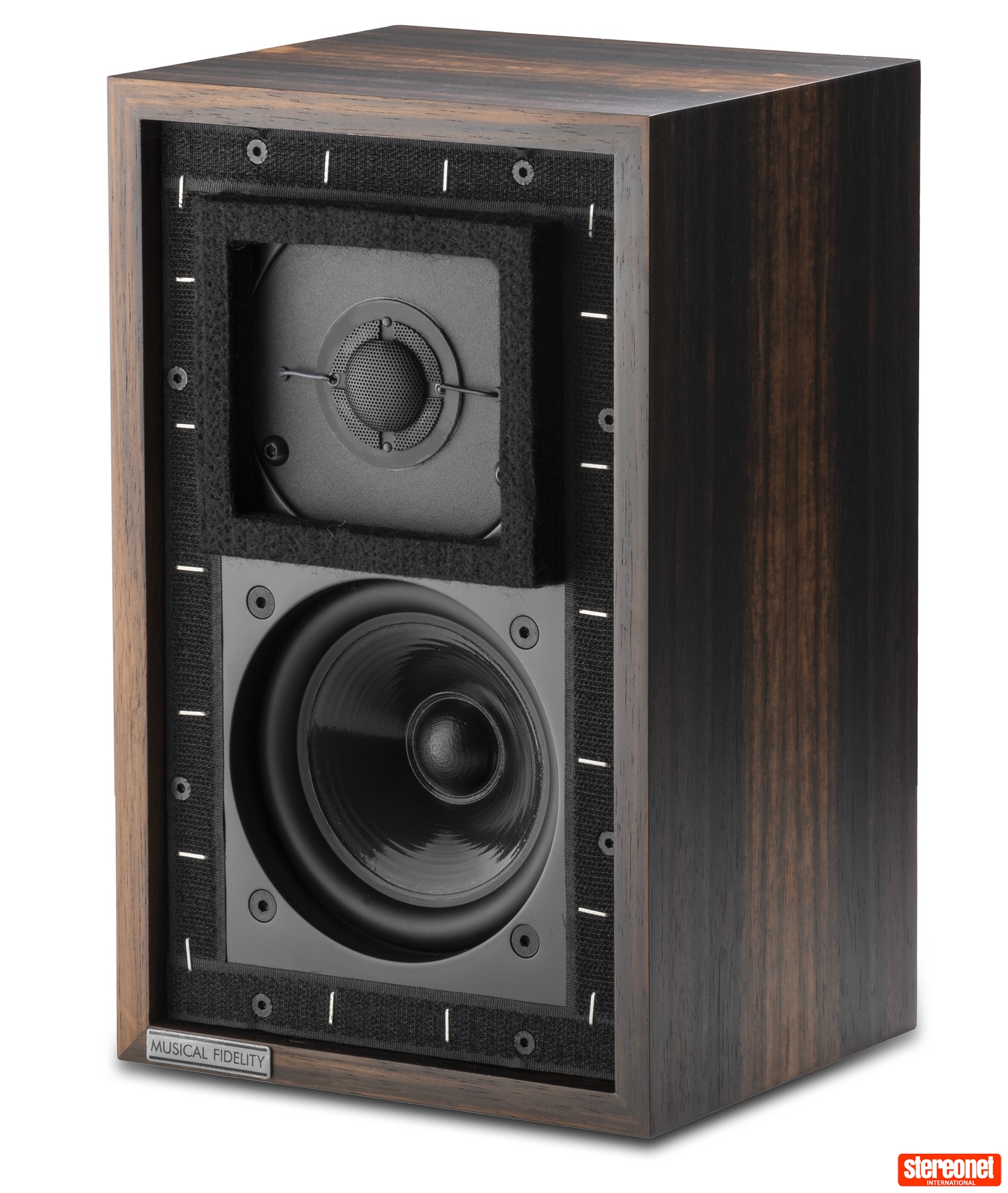
Yet the LS3/5a is surprisingly music-agnostic. Because it times so well and has a decent go at dynamics, too, you can enjoy a surprisingly wide range of programme material. Playing a Deutsche Grammophon recording of the lilting Summer from Antonio Vivaldi's Four Seasons is a joy; you can see why classical music fans rate this speaker so highly. It does so much so well – from the delicious instrumental timbre on the violins to the pacy and propulsive rhythm flow and the excellent soundstaging that puts you in the hall. Okay, so the cellos aren't quite as gutsy as you may be used to, and the sound lacks impact on the massed string sections, yet still, this speaker makes music thrilling.
THE VERDICT
 To my ears, the new Musical Fidelity is one of the best-sounding LS3/5a variants on sale – and I have heard most over the years. It is head and shoulders above many classic examples of the breed, and arguably a properly implemented box-fresh version is always going to be betterolder, classic examples of the breed that I've heard – a high-quality, box-fresh version is always going to be better. This can be bought brand new and relatively inexpensively, from a wide range of dealers in this country and beyond. And, finally, Heinz Lichtenegger tells me that he's not yet finished with loudspeakers, so watch this space for more Musical Fidelity designs.
To my ears, the new Musical Fidelity is one of the best-sounding LS3/5a variants on sale – and I have heard most over the years. It is head and shoulders above many classic examples of the breed, and arguably a properly implemented box-fresh version is always going to be betterolder, classic examples of the breed that I've heard – a high-quality, box-fresh version is always going to be better. This can be bought brand new and relatively inexpensively, from a wide range of dealers in this country and beyond. And, finally, Heinz Lichtenegger tells me that he's not yet finished with loudspeakers, so watch this space for more Musical Fidelity designs.
Visit Musical Fidelity for more information
David Price
David started his career in 1993 writing for Hi-Fi World and went on to edit the magazine for nearly a decade. He was then made Editor of Hi-Fi Choice and continued to freelance for it and Hi-Fi News until becoming StereoNET’s Editor-in-Chief.
Posted in: Applause Awards | 2023 | Loudspeakers | Bookshelf / Standmount | Hi-Fi
JOIN IN THE DISCUSSION
Want to share your opinion or get advice from other enthusiasts? Then head into the Message
Forums where thousands of other enthusiasts are communicating on a daily basis.
CLICK HERE FOR FREE MEMBERSHIP
Trending
applause awards
Each time StereoNET reviews a product, it is considered for an Applause Award. Winning one marks it out as a design of great quality and distinction – a special product in its class, on the grounds of either performance, value for money, or usually both.
Applause Awards are personally issued by StereoNET’s global Editor-in-Chief, David Price – who has over three decades of experience reviewing hi-fi products at the highest level – after consulting with our senior editorial team. They are not automatically given with all reviews, nor can manufacturers purchase them.
The StereoNET editorial team includes some of the world’s most experienced and respected hi-fi journalists with a vast wealth of knowledge. Some have edited popular English language hi-fi magazines, and others have been senior contributors to famous audio journals stretching back to the late 1970s. And we also employ professional IT and home theatre specialists who work at the cutting edge of today’s technology.
We believe that no other online hi-fi and home cinema resource offers such expert knowledge, so when StereoNET gives an Applause Award, it is a trustworthy hallmark of quality. Receiving such an award is the prerequisite to becoming eligible for our annual Product of the Year awards, awarded only to the finest designs in their respective categories. Buyers of hi-fi, home cinema, and headphones can be sure that a StereoNET Applause Award winner is worthy of your most serious attention.





